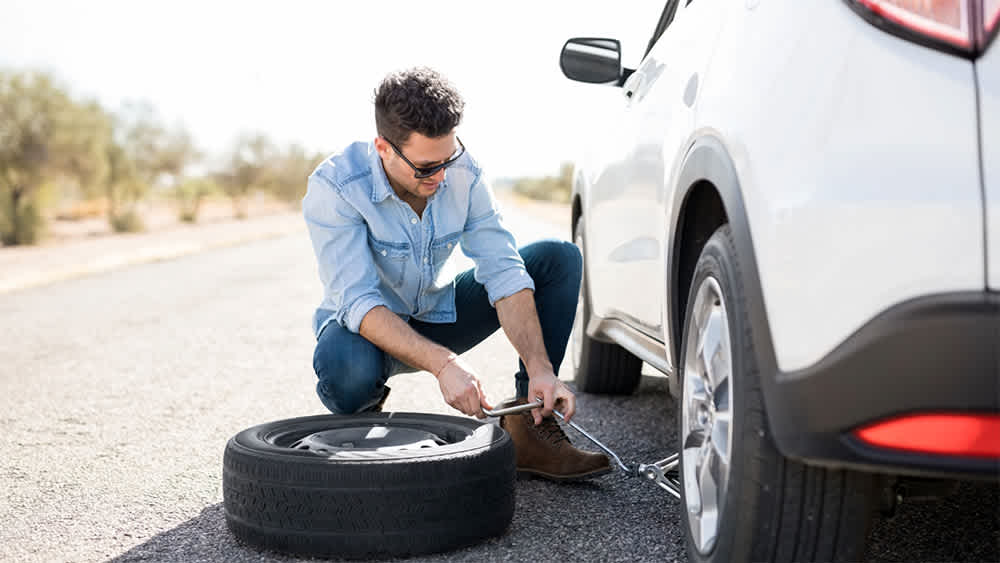Tire News & Information
Run-Flat vs. Standard Tires: Which One is Right for You?

Best price guarantee
Tire replacement coverage
24/7 roadside assistance
Easy returns
Tire News & Information

Flat tires are a hassle no driver wants to deal with, but thanks to advancements in tire technology, run-flat tires offer a solution that allows you to keep driving even after a puncture. These tires provide added safety and convenience, reducing the chances of being stranded on the side of the road.
However, run-flat tires have advantages and drawbacks, making it essential to weigh your options before deciding if they’re the best fit for your vehicle. In this guide, we’ll break down how run-flat tires work, their benefits and limitations, and how they compare to traditional tires. By the end, you’ll have a clearer idea of which option suits your driving needs best.
Run-flat tires are designed to allow continued driving even after losing air pressure due to a puncture. They achieve this with reinforced sidewalls that help support the vehicle’s weight, allowing you to drive at reduced speeds (typically up to 50 mph) for a limited distance (around 50 miles). This feature provides extra time to reach a repair shop or a safe location without pulling over immediately.
There are two main types of run-flat tire systems:
Self-Supporting Run-Flats: These have stiffer, reinforced sidewalls that keep the tire from collapsing when air pressure is lost.
Internal Support Ring System: This design features a solid rubber ring inside the tire, helping to maintain shape and support even when deflated.
No matter the type, the goal of run-flat tires is to keep you moving in the event of a puncture, providing added safety and peace of mind.
Increased Safety & Convenience: Run-flat tires allow you to keep driving even after a puncture, eliminating the need to change a tire on the roadside. This is especially beneficial in busy traffic, remote areas, or bad weather.
No Need for a Spare Tire: Because run-flat tires let you continue driving, many vehicles equipped with them do not include a spare tire. This frees up trunk space and reduces overall vehicle weight, which can help with fuel efficiency.
Better Stability After a Blowout: Unlike traditional tires that can cause a sudden loss of control after a blowout, run-flats maintain their shape and structure, allowing you to steer and brake more safely.
Higher Cost & Limited Availability: Run-flat tires typically cost more than standard tires, and they’re not as widely available in every size or style, making replacements more expensive and potentially harder to find.
Harsher Ride & Shorter Lifespan: Because of their stiffer construction, run-flat tires may provide a firmer ride than traditional tires. They also tend to wear out faster, meaning you may need replacements sooner.
Limited Repairability: Once a run-flat tire has been driven on after a puncture, it often cannot be repaired and must be replaced entirely. This can lead to higher long-term costs compared to standard tires, which can often be patched.

Deciding between run-flat and standard tires depends on your vehicle and driving needs.
Go for Run-Flat Tires if you:
Stick with Standard Tires if you:
Your vehicle’s manual and tire placard (usually located inside the driver’s door frame) will indicate whether run-flat tires are required. If your car is designed for them, switching to standard tires may require additional adjustments, such as carrying a spare or modifying suspension settings.
Ultimately, the best tire choice depends on your driving habits, budget, and preference for safety and convenience. If you’re ready to explore options, check out our selection of high-quality run-flat and standard tires. Our expert team can help you find the best fit for your vehicle so you can drive with confidence.
Run-flat tires are designed to be driven another 50 miles at speeds less than 50 mph after loss of inflation pressure.
Run-flat tires are designed for a max speed of 50 mph, but you may be able to go a little longer distance by driving at lower speeds.
Search By